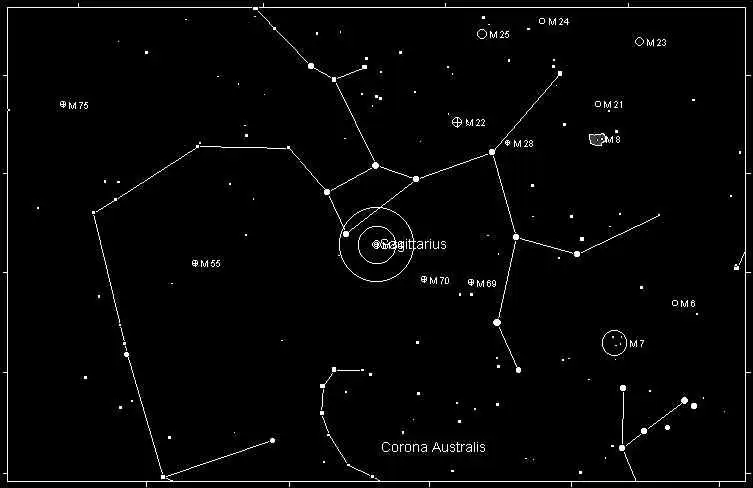Messier 54 (M54) is a bright and densely packed globular cluster located in the constellation Sagittarius. Discovered by Charles Messier in 1778, it was initially thought to be a part of the Milky Way galaxy. However, later observations revealed that M54 belongs to the Sagittarius Dwarf Spheroidal Galaxy (SagDEG), making it one of the first globular clusters known to reside outside our galaxy. This discovery added to the complexity of globular cluster formation and their relationship to the galaxies they orbit.
M54 contains hundreds of thousands of stars, including a significant number of variable stars. Its core is extremely dense, leading some astronomers to suggest that it might contain an intermediate-mass black hole. The cluster spans about 150 light-years across and is located roughly 87,000 light-years away from Earth.
Magnitude
Messier 54 has an apparent magnitude of 7.59, making it visible through small telescopes and binoculars, though it cannot be seen with the naked eye. Its brightness and large size make it a popular target for amateur astronomers interested in observing globular clusters.
Best Season to View
M54 is best observed during the summer months in the Northern Hemisphere, particularly between June and August, when the constellation Sagittarius is prominent in the night sky. During this time, the cluster is high enough above the horizon for good visibility, especially for observers at lower latitudes.
Constellation: Sagittarius
Messier 54 is located within the constellation Sagittarius, a region rich with deep-sky objects, including the center of our Milky Way galaxy. Sagittarius is commonly depicted as an archer and lies along the plane of the Milky Way, making it a dense region of stars, clusters, and nebulae.
Sagittarius is a summer constellation in the Northern Hemisphere and is easily recognizable due to the asterism known as the "Teapot," which forms part of the archer's body. M54 is located just east of the "Teapot's" spout, near the star ζ (Zeta) Sagittarii.
How to Find Messier 54
To find M54, locate the Sagittarius constellation and focus on the "Teapot" asterism. The bright stars of the "Teapot" will guide you. Begin with the star Kaus Australis (Epsilon Sagittarii), which forms the base of the spout. Move your telescope slightly to the east, towards Zeta Sagittarii. M54 lies about 1.5 degrees east of Zeta Sagittarii.
When viewed through a telescope, M54 appears as a compact, fuzzy ball of light with a dense core. A small telescope will reveal the cluster as a nebulous patch, while a larger telescope may resolve some of the individual stars, particularly near the edges.

History
Charles Messier first observed M54 on July 24, 1778, and cataloged it as the 54th entry in his famous list of "nebulae and star clusters." Messier described it as a nebulous cluster that lacked a clear center. For many years, astronomers believed that M54 was just another globular cluster within the Milky Way, like others in the Messier catalog.
In 1994, however, astronomers discovered that M54 was not part of our galaxy but was instead associated with the Sagittarius Dwarf Spheroidal Galaxy, a satellite galaxy of the Milky Way. This was a groundbreaking discovery, as it was one of the first instances of a globular cluster being linked to another galaxy. It provided valuable insights into the formation and evolution of globular clusters and their role in galactic dynamics.
Conclusion
Messier 54 is an extraordinary object in the night sky, not only for its bright, densely packed stars but also for its unique place outside the Milky Way. As part of the Sagittarius Dwarf Spheroidal Galaxy, it offers a glimpse into the broader structure of the universe and the interactions between galaxies and their clusters. It remains a favorite target for astronomers and stargazers, particularly during the summer months when Sagittarius dominates the southern sky.
